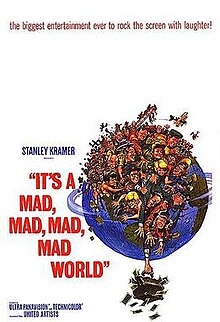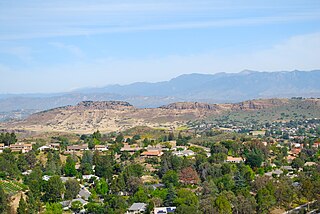
Thousand Oaks is a city in the northwestern part of Greater Los Angeles, approximately 15 miles (24 km) from the city of Los Angeles and 40 miles (64 km) from Downtown Los Angeles. The second-largest city in Ventura County, California, it is named after the many oak trees present in the area.

Cinerama is a widescreen process that originally projected images simultaneously from three synchronized 35mm projectors onto a huge, deeply curved screen, subtending 146-degrees of arc. The trademarked process was marketed by the Cinerama corporation. It was the first of several novel processes introduced during the 1950s when the movie industry was reacting to competition from television. Cinerama was presented to the public as a theatrical event, with reserved seating and printed programs, and audience members often dressed in their best attire for the evening.

ZaSu Pitts was an American actress whose career spanned nearly five decades, starring in many silent film dramas, including Erich von Stroheim's 1924 epic Greed, and comedies, before transitioning successfully to mostly comedy roles with the advent of sound films. She also appeared on numerous radio shows and, later, made her mark on television. She was awarded a star on the Hollywood Walk of Fame in 1960 at 6554 Hollywood Blvd.

The Cinerama Dome is a movie theater located at 6360 Sunset Boulevard in Hollywood, California. Designed to exhibit widescreen Cinerama films, it opened November 7, 1963. The original developer was William R. Forman, founder of Pacific Theatres. The Cinerama Dome continued as a leading first-run theater, most recently as part of the ArcLight Hollywood complex, until it closed temporarily in March 2020 due to the COVID-19 pandemic in California. The ArcLight chain closed permanently in April 2021, with the theater never having reopened. In June 2022, it was announced that there were plans to reopen it and the former ArcLight Hollywood under a new name, Cinerama Hollywood.
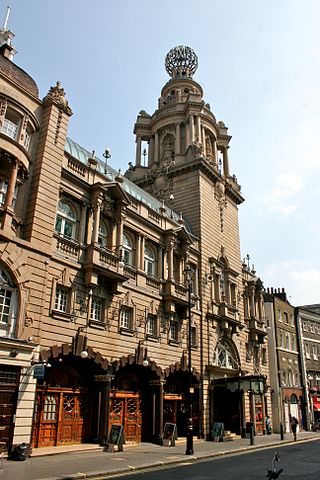
The London Coliseum is a theatre in St Martin's Lane, Westminster, built as one of London's largest and most luxurious "family" variety theatres. Opened on 24 December 1904 as the London Coliseum Theatre of Varieties, it was designed by the architect Frank Matcham for the impresario Oswald Stoll. Their ambition was to build the largest and finest music hall, described as the "people's palace of entertainment" of its age.

Rat Race is a 2001 American comedy film directed by Jerry Zucker. Inspired by Stanley Kramer's 1963 film It's a Mad, Mad, Mad, Mad World, the film features an ensemble cast consisting of Rowan Atkinson, Whoopi Goldberg, Cuba Gooding Jr., Wayne Knight, Jon Lovitz, Kathy Najimy, Lanei Chapman, Breckin Meyer, Amy Smart, Seth Green, Vince Vieluf, John Cleese and Dave Thomas.

Carl William Demarest was an American actor, known especially for his roles in screwball comedies by Preston Sturges and as Uncle Charley in the sitcom My Three Sons from 1965-72. Demarest, who frequently played crusty but good-hearted roles, was a prolific film and television actor, appearing in over 140 films, beginning in 1926 and ending in the late 1970s. Before his career in movies, he performed in vaudeville for two decades.

Todd-AO is an American post-production company founded in 1953 by Mike Todd and Robert Naify, providing sound-related services to the motion picture and television industries. For more than five decades, it was the worldwide leader in theater sound. The company retains one facility, in the Los Angeles area.

Albert Paul Mantz was a noted air racing pilot, movie stunt pilot and consultant from the late 1930s until his death in the mid-1960s. He gained fame on two stages: Hollywood and in air races.
A roadshow theatrical release or reserved seat engagement is the practice of opening a film in a limited number of theaters in major cities for a specific period of time before the wide release of the film. Roadshows would generally mimic a live theatre production, with an upscale atmosphere as well as somewhat higher prices than during a wide release. They were commonly used to promote major films from the 1920s–60s and build excitement.

Panavision is an American motion picture equipment company founded in 1954 specializing in cameras and lenses, based in Woodland Hills, California. Formed by Robert Gottschalk as a small partnership to create anamorphic projection lenses during the widescreen boom in the 1950s, Panavision expanded its product lines to meet the demands of modern filmmakers. The company introduced its first products in 1954. Originally a provider of CinemaScope accessories, the company's line of anamorphic widescreen lenses soon became the industry leader. In 1972, Panavision helped revolutionize filmmaking with the lightweight Panaflex 35 mm movie camera. The company has introduced other cameras such as the Millennium XL (1999) and the digital video Genesis (2004).

Frank Gifford Tallman III was a stunt pilot who worked in Hollywood during the 1960s and 1970s. He was the son of Frank Gifford Tallman, Jr. and Inez Evelyn Foster.
Super Technirama 70 was the marketing name for a special type of deluxe film exhibition that was most popular in the 1960s. It was the 70 mm version of the Technirama exhibition format.
Super Panavision 70 is the marketing brand name used to identify movies photographed with Panavision 70 mm spherical optics between 1959 and 1983. It has since been replaced by Panavision System 65.

The Seattle Cinerama Theatre is a landmark movie theater in the Belltown neighborhood of Seattle, Washington, United States. The theater opened in 1963 and was renovated in the 1990s after its acquisition by Paul Allen. The Cinerama was closed in May 2020. At the time of its 2020 closure, it was one of only three movie theaters in the world capable of showing three-panel Cinerama films. In 2023, the theater was purchased by the Seattle International Film Festival (SIFF) and reopened on December 14, 2023 as SIFF Cinema Downtown due to trademark issues with the "Cinerama" name.
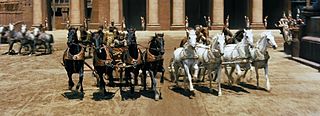
Ultra Panavision 70 and MGM Camera 65 were, from 1957 to 1966, the marketing brands that identified motion pictures photographed with Panavision's anamorphic movie camera lenses on 65 mm film. Ultra Panavision 70 and MGM Camera 65 were shot at 24 frames per second (fps) using anamorphic camera lenses. Ultra Panavision 70 and MGM Camera 65's anamorphic lenses compressed the image 1.25 times, yielding an extremely wide aspect ratio of 2.76:1.
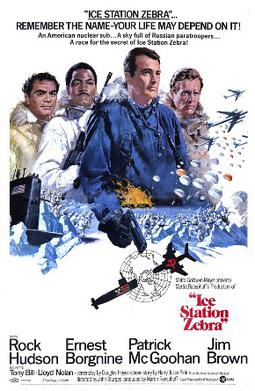
Ice Station Zebra is a 1968 American espionage thriller film directed by John Sturges and starring Rock Hudson, Patrick McGoohan, Ernest Borgnine, and Jim Brown. The screenplay is by Douglas Heyes, Harry Julian Fink, and W. R. Burnett, loosely based on Alistair MacLean's 1963 novel. Both have parallels to real-life events that took place in 1959. The film concerns a US nuclear submarine that must rush to the North Pole to rescue the members of the Ice Station Zebra.
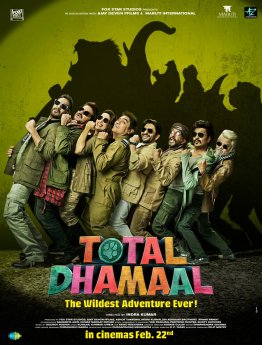
Total Dhamaal is a 2019 Indian Hindi-language adventure comedy film directed and written by Indra Kumar and loosely based on the 1963 Hollywood film It's a Mad, Mad, Mad, Mad World with some scenes borrowed from the 2015 film Vacation and some from the 2014 film Blended. Being a third part of Dhamaal but this is the third installment of Dhamaal film series franchise, it is produced by Ajay Devgn FFilms, Markand Adhikari, Fox Star Studios, Maruti International, Pen India Limited and Mangal Murti Films. The film has an ensemble cast of Ajay Devgn, Anil Kapoor, Esha Gupta, Madhuri Dixit, Riteish Deshmukh, Arshad Warsi and Jaaved Jaaferi with supporting cast of Boman Irani, Johnny Lever, Sanjay Mishra, Pitobash Tripathy and Manoj Pahwa, a cameo by Niharica Raizada and special appearance of Sonakshi Sinha in song Mungda. The trio of Deshmukh, Warsi and Jaaferi was part of previous two installments while Sanjay Dutt was replaced by Boman Irani, while Devgn, Gupta, Dixit and Kapoor were new additions.
Conejo Valley Airport, also known as Janss Airport, was an airport in Thousand Oaks, California. It had a 2,600 foot runway and was located adjacent to Thousand Oaks Boulevard. The airport opened in 1926, but was relocated in the early 1960s. The new airport, known as Rancho Conejo Airport, was established on the north side of State Highway 101. Various movies were filmed at Conejo Valley Airport, including The Paleface (1948), Riders of the Whistling Pines (1949), and Overland Stage Raiders (1938). Rancho Conejo Airport appeared in the film It's a Mad, Mad, Mad, Mad World (1963).
